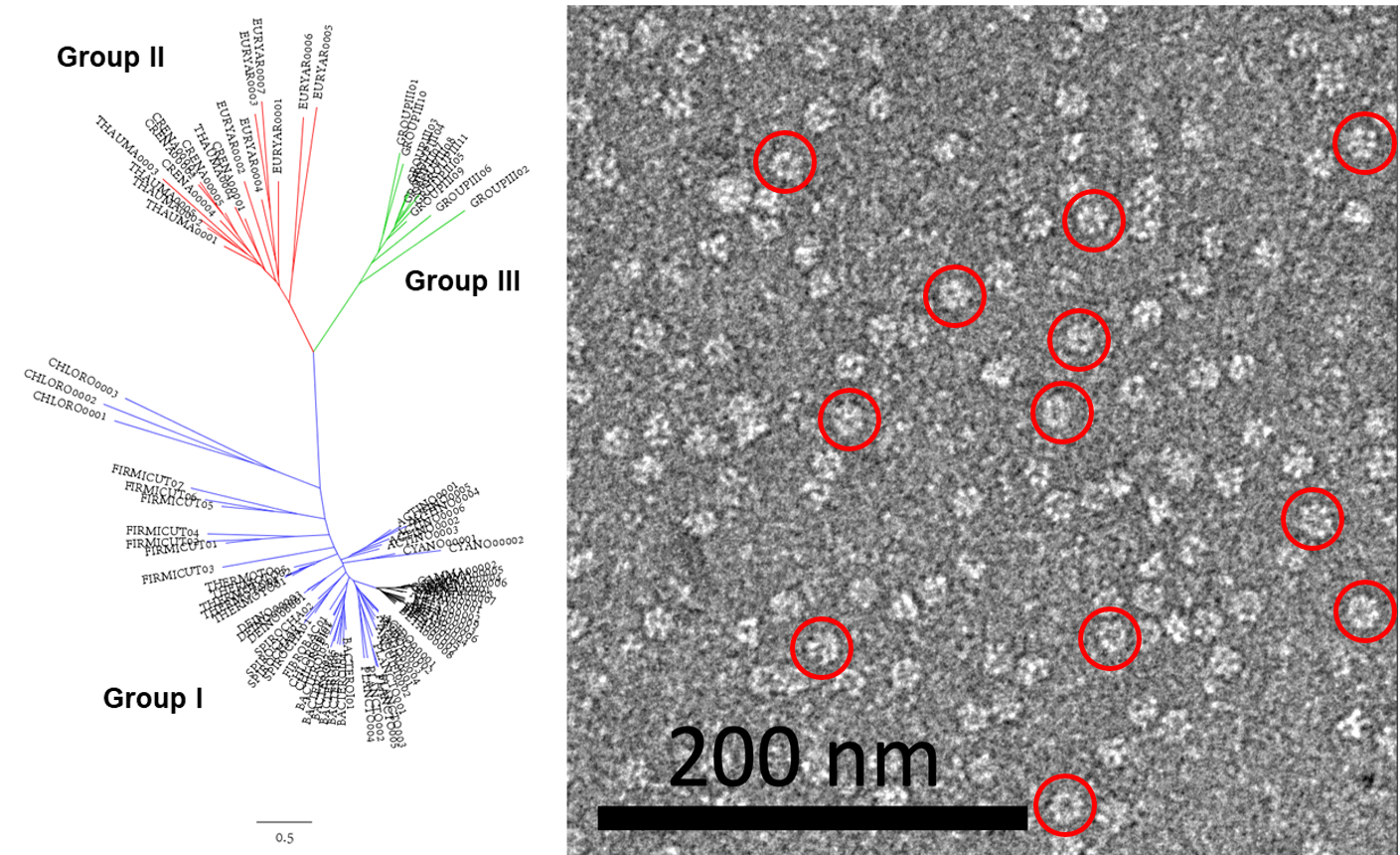Resurrecting ancestral chaperonins as proxies for biomarker discovery in astrobiology
- 1Centro de Astrobiología, Molecular Evolution, Madrid, Spain (rseverino@cab.inta-csic.es)
- 2Centro Nacional de Biotecnologia (CNB, CSIC), Madrid, Spain (jmv@cnb.csic.es)
Astrobiology is the study of the origin, evolution, and distribution of life in the context of cosmic evolution, which includes habitability in the Solar System and beyond (Horneck et al., 2016). After NASA was established in 1958, the agency began an effort to learn how to look for the presence of life beyond Earth - both ancient and current. This began with the Viking landers in 1976, but it was not until the 2012 landing of Curiosity that another astrobiology (though not life detection) mission began. Today there is a growing multidisciplinary community that aims at answering the question: Is there life beyond Earth and, if so, how can we detect it? Mars, in particular, once had water, atmosphere, and volcanic activity, where life could have flourished. There is also a slim chance that microbial life exists on Mars today. But how can we detect Martian life? Our research focuses on biosignatures as facilitating life detection (Horneck et al., 2016; Neveu, Hays, Voytek, New, & Schulte, 2018). Particularly, the identification and detection of functional molecules (DNA, lipids, proteins), using antibodies and immunoassays, in natural samples. Antibodies targeting proteins obtained from crude environmental extracts, from extreme environments on Earth, have been used as antigens in our research, successfully (Fernández-Martínez et al., 2019; Sanchez-Garcia et al., 2019). Recently, we tested ancestral proteins, obtained through Ancestral Sequence Reconstruction techniques, as antigens, and tested several terrestrial environments (Severino et al., in preparation). Results were promising, as their presence could be traced back to terrestrial paleoenvironments (environments that retain ancestral characteristics), thus opening a new field in astrobiology. Molecular chaperones are one of the oldest protein families, and Hsp60 (chaperonins) is the oldest clan, whose origins can be traced back to the last common ancestor (Rebeaud, Mallik, Goloubinoff, & Tawfik, 2021). They are commonly identified in extreme environments, either by metaproteomics, or microarray immunoassays (Fernández-Martínez et al., 2019; Sanchez-García et al., 2019). Here, we report the ancestral sequence reconstruction and protein resurrection of this family of proteins (Figure 1) and discuss our findings in the light of biogeochemistry, systems-level paleoenvironments characterization, and astrobiological applications (Kaçar, Guy, Smith, & Baross, 2017).

Figure 1. Bayesian phylogenetic reconstruction of the Hsp60 family of genes (on the left). TEM micrograph of the resurrected last common ancestor of Group I Hsp60 family of genes, clear frontal views highlighted by red circles (on the right).
Funding: Spain AEI project RTI2018-094368-B-I00 (VP) and PID2019-105872GBI00/AEI/10.13039/501100011033 (AEI/FEDER, UE) (JMV).
References: Horneck et al. (2016) Astrobiology, 16(3), 201–243. Fernández-Martínez, et al. (2019) Frontiers in Microbiology, 10, 1641. Neveu et al. (2018) Astrobiology, 18(11), 1375–1402. Sanchez-García et al. (2019) Frontiers in Microbiology, 10(JAN), 3350. Rebeaud, Mallik, Goloubinoff, & Tawfik (2021) PNAS, 118(21). Kaçar, Guy, Smith, & Baross (2017) Philos. Trans. Royal Soc. A, 375(2109).
How to cite: Severino, R., Maestro-Lópes, M., Cuéllar, J., Valpuesta, J. M., and Parro, V.: Resurrecting ancestral chaperonins as proxies for biomarker discovery in astrobiology, Europlanet Science Congress 2022, Granada, Spain, 18–23 Sep 2022, EPSC2022-352, https://doi.org/10.5194/epsc2022-352, 2022.

